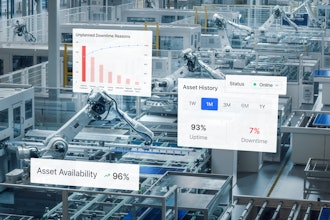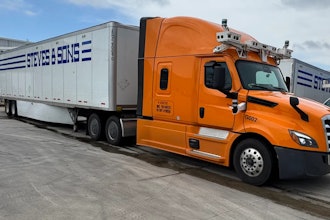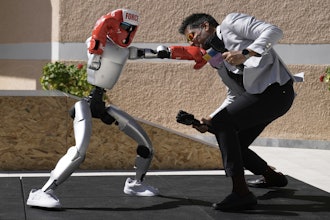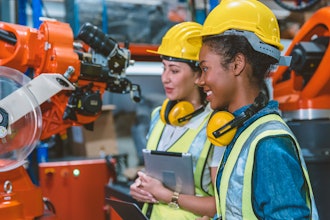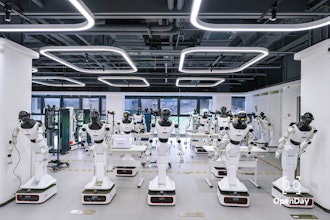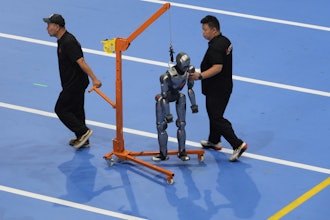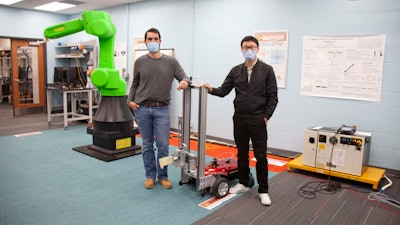
One flaw in the notion that robots will take over the world is that the world is full of doors.
And doors are kryptonite to robots, said Ou Ma, an aerospace engineering professor at the University of Cincinnati.
“Robots can do many things, but if you want one to open a door by itself and go through the doorway, that’s a tremendous challenge,” Ma said.
Students in UC’s Intelligent Robotics and Autonomous Systems Laboratory have solved this complex problem in three-dimensional digital simulations. Now they’re building an autonomous robot that not only can open its own doors but also can find the nearest electric wall outlet to recharge without human assistance.
This simple advance in independence represents a huge leap forward for helper robots that vacuum and disinfect office buildings, airports and hospitals. Helper robots are part of a $27 billion robotics industry, which includes manufacturing and automation.
The study was published in the journal IEEE Access.
UC College of Engineering and Applied Science doctoral student Yufeng Sun, the study’s lead author, said some researchers have addressed the problem by scanning an entire room to create a 3D digital model so the robot can locate a door. But that is a time-consuming custom solution that works only for the particular room that is scanned.
Sun said developing an autonomous robot to open a door for itself poses several challenges.
Doors come in different colors and sizes with different handles that might be slightly higher or lower. Robots have to know how much force to use to open doors to overcome resistance. Most public doors are self-closing, which means if the robot loses its grip, it has to start over.
Since UC students are using machine learning, the robot has to “teach” itself how to open a door, essentially through trial and error. This can be time-consuming initially, but the robot corrects its mistakes as it goes. Simulations help the robot prepare for the actual task, Sun said.
“The robot needs sufficient data or ‘experiences’ to help train it,” Sun said. “This is a big challenge for other robotic applications using AI-based approaches for accomplishing real-world tasks.”
Now, Sun and UC master’s student Sam King are converting Sun’s successful simulation study into a real robot.
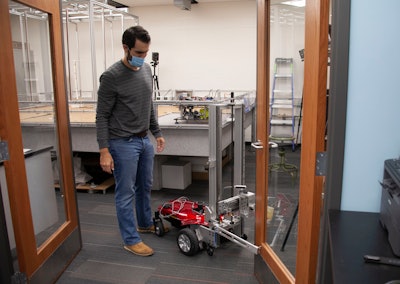 UC engineering student Sam King demonstrates how the autonomous robot will work once complete. Translating the successful AI simulation to a real-world robot could take months of development.Ravenna Rutledge/UC Creative
UC engineering student Sam King demonstrates how the autonomous robot will work once complete. Translating the successful AI simulation to a real-world robot could take months of development.Ravenna Rutledge/UC Creative
“The challenge is how to transfer this learned control policy from simulation to reality, often referred to as a ‘Sim2Real’ problem,” Sun said.
Digital simulations typically are only 60% to 70% successful in initial real-world applications, Sun said. He expects to spend a year or more bridging the gap to perfect his new autonomous robotics system.
So there's plenty of time to invest in robot-proof door locks.










